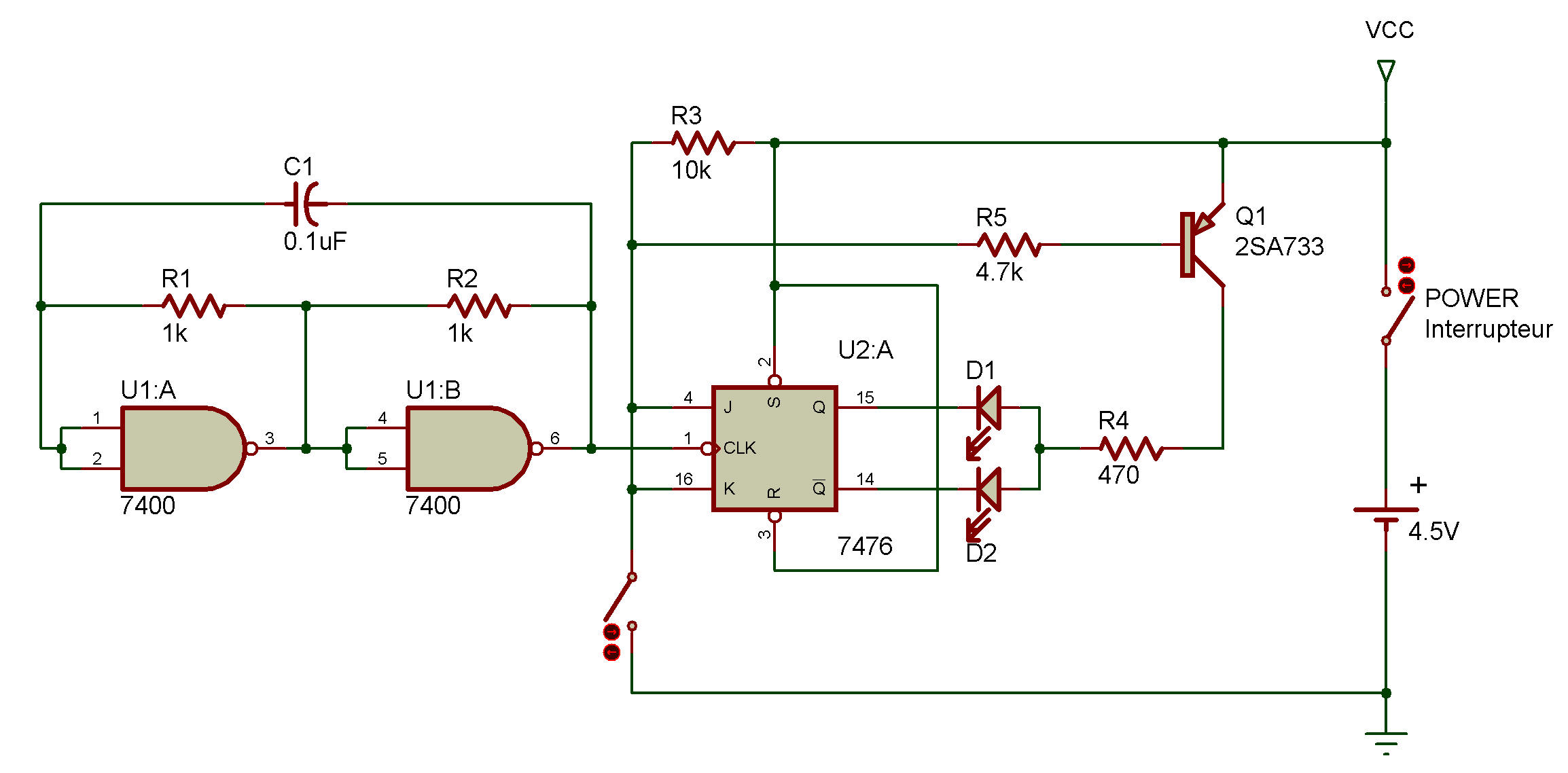
Electronic Coin Toss I
7400, 7476

Do you hate to make decisions?
Is so, you'll love the next several Projects!
This group of "electronic decision makers" can be used in games in place of dice. And you can make up your own games using these circuits.
Since these Projects all "make decisions", you might expect them all to involve digital electronics. And you're right!
Take a look at the schematic diagram for this Project. You'll see that it involves both NAND gates and the R-S flip-flop.
Can you guess how this circuit works before you build it?
When you finish building this Project, set the Control knob clockwise to ON. Press the Key once.
Observe what happens to LEDs 1 and 2. Press the Key several times. What pattern, if any, can you detect in the lighting of the two LEDs?
As you probably suspect, while the Key is open, the R-S flip-flop is rapidly setting and resetting. This does not affect the LEDs, since the 2SA transistor is "off" while the Key is open.
By pressing the Key, you do two things; turn the 2SA transistor "on" (and thus provide a current path for the LEDs), and stop the R-S flip-flop's continuous setting and resetting.
One LED is set while the other is reset. Does this happen at random or is there a pattern?
Try this experiment to find out:
press the Key fifty times and record which LED lights.
Does each LED light up 25 times?
It not, are the results almost equal?
A truly random result would be each LED lighting exactly 25 times. It's not unusual for this to vary a bit, such as one LED lighting 27 times and the other 23 times.
But if there's a big difference — such as one LED lighting 40 times and the other only lighting 10 times - that indicates the circuit isn't really random. Would you say this Project is or isn't random?
